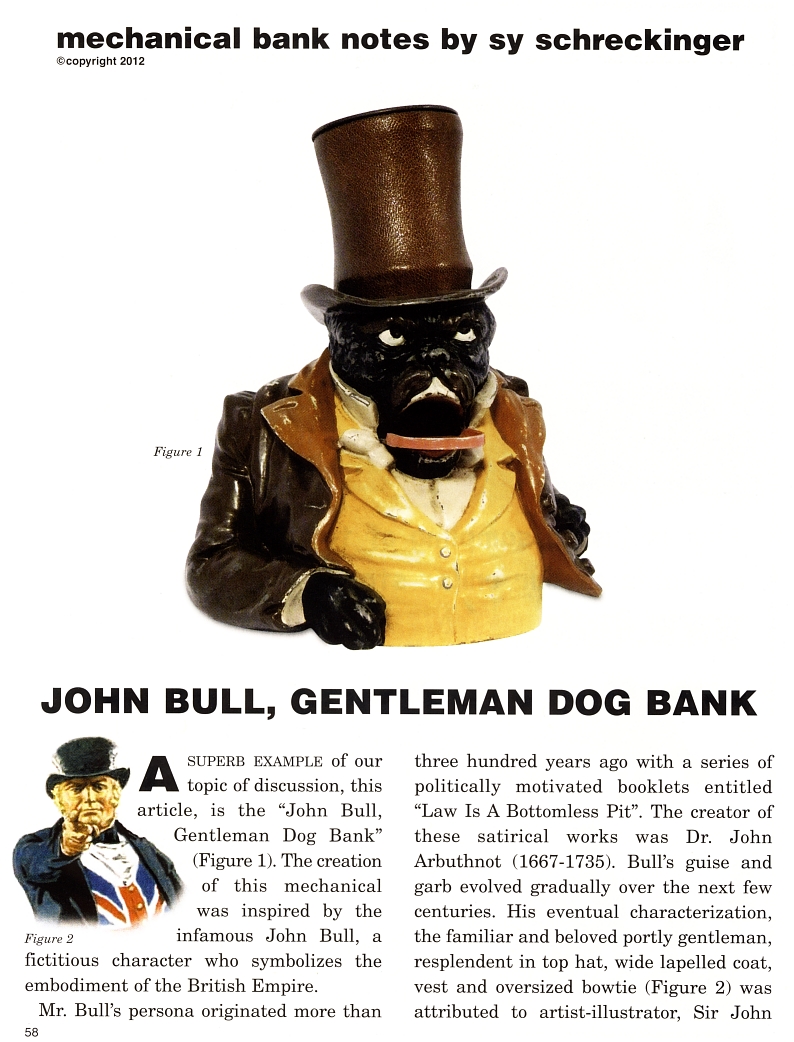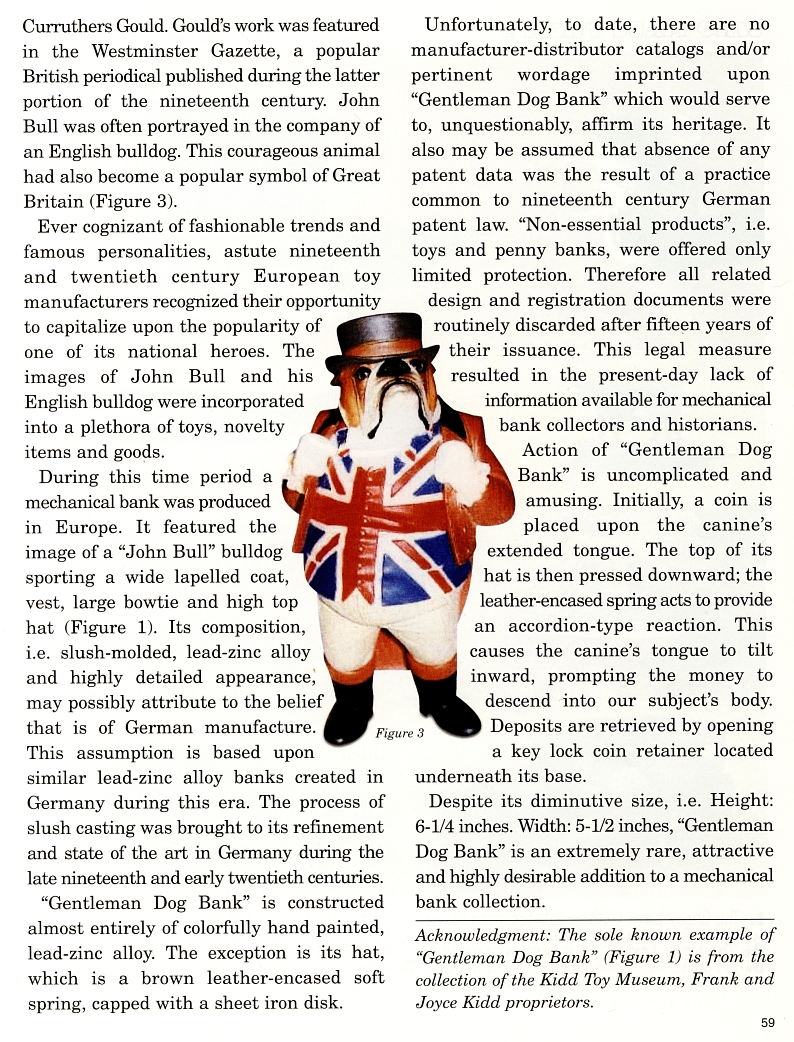|
JOHN BULL, GENTLEMAN DOG BANK
by Sy Schreckinger – ANTIQUE TOY WORLD Magazine – December, 2012
A
SUPERB EXAMPLE of our topic of discussion, this article, is the "John
Bull, Gentleman Dog Bank" (Figure 1). The creation of this mechanical
was inspired by the infamous John Bull, a character who symbolizes the
embodiment of the British Empire.
Mr. Bull's persona originated more than three hundred years ago
with a series of politically motivated booklets entitled "Law Is A
Bottomless Pit". The creator of these satirical works was Dr. John
Arbuthnot (1667-1735). Bull's guise and garb evolved gradually over the
next few centuries. His eventual characterization, the familiar and
beloved portly gentleman, resplendent in top hat, wide lapelled coat,
vest and oversized bowtie (Figure 2) was attributed to
artist-illustrator, Sir John Curruthers Gould. Gould's work was featured
in the Westminster Gazette, a popular British periodical published
during the latter portion of the nineteenth century. John Bull was often
portrayed in the company of an English bulldog. This courageous animal
had also become a popular symbol of Great Britain (Figure 3).
Ever cognizant of fashionable trends and famous personalities,
astute nineteenth and twentieth century European toy manufacturers
recognized their opportunity to capitalize upon the popularity of one of
its national heroes. The images of John Bull and his English bulldog
were incorporated into a plethora of toys, novelty items and goods.
During this time period a mechanical bank was produced in Europe.
It featured the image of a "John Bull" bulldog sporting a wide lapelled
coat, vest, large bowtie and high top hat (Figure 1). Its composition,
i.e. slush-molded, lead-zinc alloy and highly detailed appearance, may
possibly attribute to the belief that is of German manufacture. This
assumption is based upon similar lead-zinc alloy banks created in
Germany during this era. The process of slush casting was brought to its
refinement and state of the art in Germany during the late nineteenth
and early twentieth centuries.
"Gentleman Dog Bank" is constructed almost entirely of colorfully
hand painted, lead-zinc alloy. The exception is its hat, which is a
brown leather-encased soft spring, capped with a sheet iron disk.
Unfortunately, to date, there are no manufacturer-distributor
catalogs and/or pertinent wordage imprinted upon "Gentleman Dog Bank"
which would serve to, unquestionably, affirm its heritage. It also may
be assumed that absence of any patent data was the result of a practice
common to nineteenth century German patent law. "Non-essential
products", i.e. toys and penny banks, were offered only limited
protection. Therefore all related design and registration documents were
routinely discarded after fifteen years of their issuance. This legal
measure resulted in the present-day lack of information available for
mechanical bank collectors and historians.
Action of "Gentleman Dog Bank" is uncomplicated and amusing.
Initially, a coin is placed upon the canine's extended tongue. The top
of its hat is then pressed downward; the leather-encased spring acts to
provide an accordion-type reaction. This causes the canine's tongue to
tilt inward, prompting the money to descend into our subject's body.
Deposits are retrieved by opening a key lock coin retainer located
underneath its base.
Despite its diminutive size, i.e. Height: 6-1/4 inches. Width:
5-1/2 inches, "Gentleman Dog Bank" is an extremely rare, attractive and
highly desirable addition to a mechanical bank collection.
Acknowledgment: The sole known example of "Gentleman Dog Bank"
(Figure 1) is from the collection of the Kidd Toy Museum, Frank and
Joyce Kidd proprietors. |


